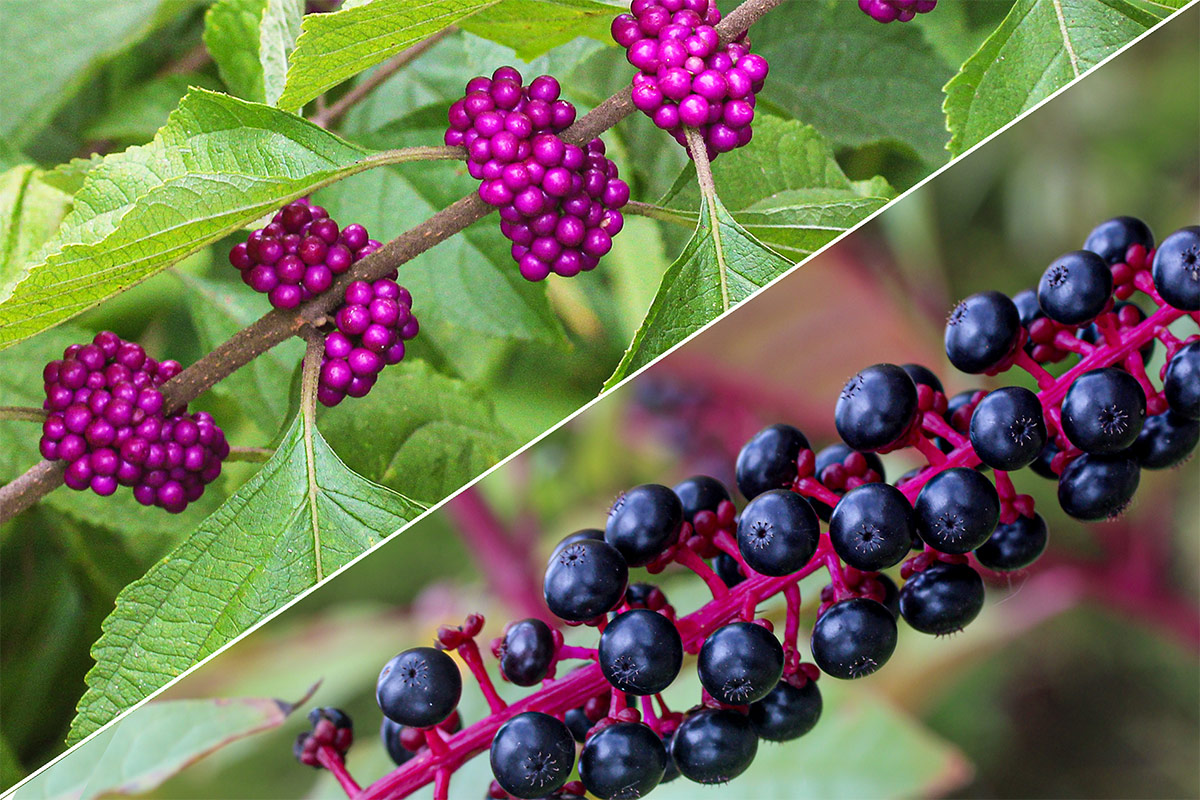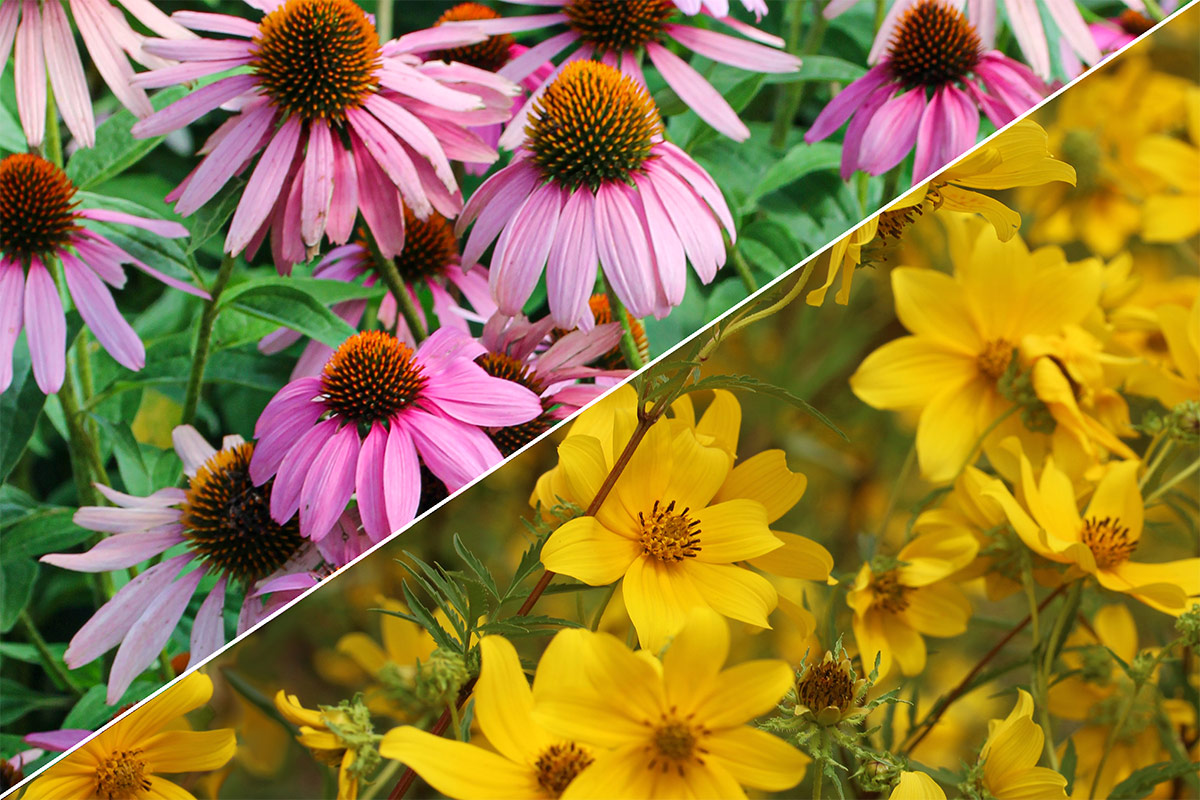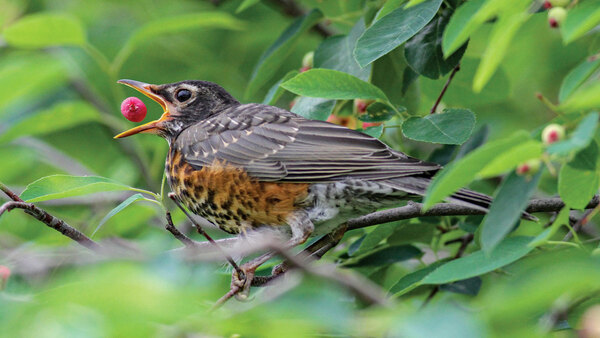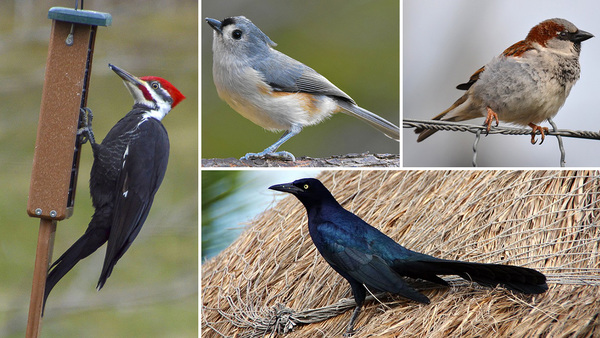
Flittering, twittering, and singing—birds bring so much life to a garden. Apart from their beauty and pleasant songs, they also add to the biodiversity of our landscapes by spreading seeds and eating insect pests. How can we encourage birds to not only visit our yards but to nest there? Here’s a hint: it goes beyond hanging up a bird feeder. You must provide sustenance and shelter for birds to truly thrive in your garden. Here are some tips to attract them and make them want to stay.

Plant trees, shrubs, and perennials that birds can eat from
While a large component of many birds’ diets is protein-packed insects, additional food sources are invaluable in the colder months. Certain Southeast native perennials and shrubs, such as American beautyberry (Callicarpa americana, Zones 5–9) and pokeweed (Phytolacca americana, Zones 4–9), offer delectable berries for birds after the blooms have faded. Beautyberry is a favorite among warblers, while cardinals and eastern bluebirds flock to pokeweed.
Other natives, such as purple coneflower (Echinacea purpurea, Zones 3-9) and false sunflower (Heliopsis helianthoides, Zones 4–9), entice birds with edible seeds. Larger birds will swoop in after the seeds fall to the ground, but tiny goldfinches may decide to go for a ride on the bobbing flower stalks to get their meal right from the source. Not to be outdone, native grasses supply seeds as well as shelter and nesting material. Waiting until early spring to cut back these perennials will allow birds to forage in the late fall and winter.

Here’s a list of other native shrubs and perennials that produce seeds or berries that birds love to eat:
Shrubs
- Arrowwood viburnum (Viburnum dentatum, Zones 3–8)
- Elderberry (Sambucus nigra subsp. canadensis, Zones 3–9)
- Northern bayberry (Myrica pensylvanica, Zones 3–6)
- Witch hazel (Hamamelis virginiana, Zones 3–8)
Perennials
- Black-eyed Susan (Rudbeckia hirta, Zones 3–9)
- Coral honeysuckle (Lonicera sempervirens, Zones 4–9)
- Northern sea oats (Chasmanthium latifolium, Zones 3–8)
- Joe Pye weed (Eutrochium spp. and cvs., Zones 3–8)
- Little bluestem (Schizachyrium scoparium, Zones 2–9)
- Partridgeberry (Mitchella repens, Zones 4–8)
- Switchgrass (Panicum virgatum, Zones 5–9)
- Wild strawberry (Fragaria virginiana, Zones 4–9)

Install a bird feeder and a birdbath
Let’s be honest—the joy of gardening for birds lies in seeing them, and many of us relish the interactivity of refilling feeders and baths. Ideally a supplemental food source, bird feeders are wonderful when used properly but detrimental when not. They should be placed away from roads and potential predators, especially cats. Over time, the bird seed in feeders will decay, and they should be cleaned regularly to avoid spreading illness. The ornithologists at the Cornell Lab advise cleaning seed feeders once every two weeks with hot, soapy water or diluted bleach.
Birds love to bathe, but the typical birdbaths found at garden centers are often too deep to be functional. A bath with a shallow basin (gently sloping and no more than 3 inches deep at the center) and the addition of sticks and rocks for perching will be more accessible. As with feeders, the best bath is a clean one. Glazed ceramic or even sturdy plastic are easy materials to scrub. Birds appreciate a bath that is positioned close enough to the safety of shrubs, but not so close that they become an easy meal for creeping cats.

Provide opportunities for birds to nest
Including small trees and shrubs in your landscape is the most effective way to encourage a variety of bird species to nest. This is an especially good consideration in fall, when it’s prime opportunity for planting trees and shrubs in the Southeast.
That said, there’s no replacement for the delight in putting up a birdhouse and seeing a new family “move in.” A well-placed birdhouse can bring lovely structural interest to a garden, or tie a meadow together in a way that says “intentional” rather than “unmowed.”
There are some pitfalls to avoid when choosing or building a birdhouse. It should have an access door for easy cleaning. It should have ventilation holes at the top that provide airflow and drainage holes at the bottom that allow water to run out. A shaded or partially shaded spot can help keep the heat off the roof of a birdhouse during the hottest part of the day, although sufficiently thick walls and ventilation should insulate against temperature extremes.
Birdhouses, like feeders and baths, should be sited to avoid predators. Guards such as stovepipe baffles can help prevent snakes and squirrels from climbing up a birdhouse pole for an easy meal. The access hole of a birdhouse should be only as large as the desired bird requires (a size-limiting predator guard can be added to get it down to size). If you want to attract a specific bird, research online the size of the hole it needs in a birdhouse. While birdhouse perches are evocative of the classic image we know and love, they are unnecessary and only make it easier for aggressive birds like house sparrows and other predators to disrupt the nest.
When it comes to construction, natural materials are best. Any nontoxic paints, stains, or decorative elements should be kept on the outside of the box, and toxic components avoided altogether. Birdhouses can be purchased with a critical eye or constructed at home from untreated wood. The Cornell Lab’s “Nestwatch” is the ultimate resource for nesting box plans to attract specific species, from Carolina chickadees to purple martins and great blue herons. Click here for a list of other birds you might see nesting in your birdhouse.
Avoid synthetic weedkillers and pesticides
Birds rely on insects for much of their food, and the use of synthetic pesticides can harm birds both indirectly by reducing the insect population and directly if a bird ingests an insect killed through the use of pesticides. Rodents killed using poison can also harm larger birds of prey who eat them. Exposure to synthetic weedkillers has also been known to affect several organisms throughout the ecosystem, including birds. When looking to kill weeds or pests, turn to all natural, nontoxic products instead.
By planting bird-friendly plants, adding a birdbath, birdhouse, or bird feeder, and avoiding the use of toxic chemicals, you can attract birds to your garden and enjoy their presence year-round.
For more information on gardening for birds, check out:
And for more Southeast regional reports, click here.
Cheyenne Wine is a writer and photographer for Rare Roots Nursery in Mechanicsville, Virginia.
Photos, unless otherwise noted: Cheyenne Wine


















Comments
Log in or create an account to post a comment.
Sign up Log in